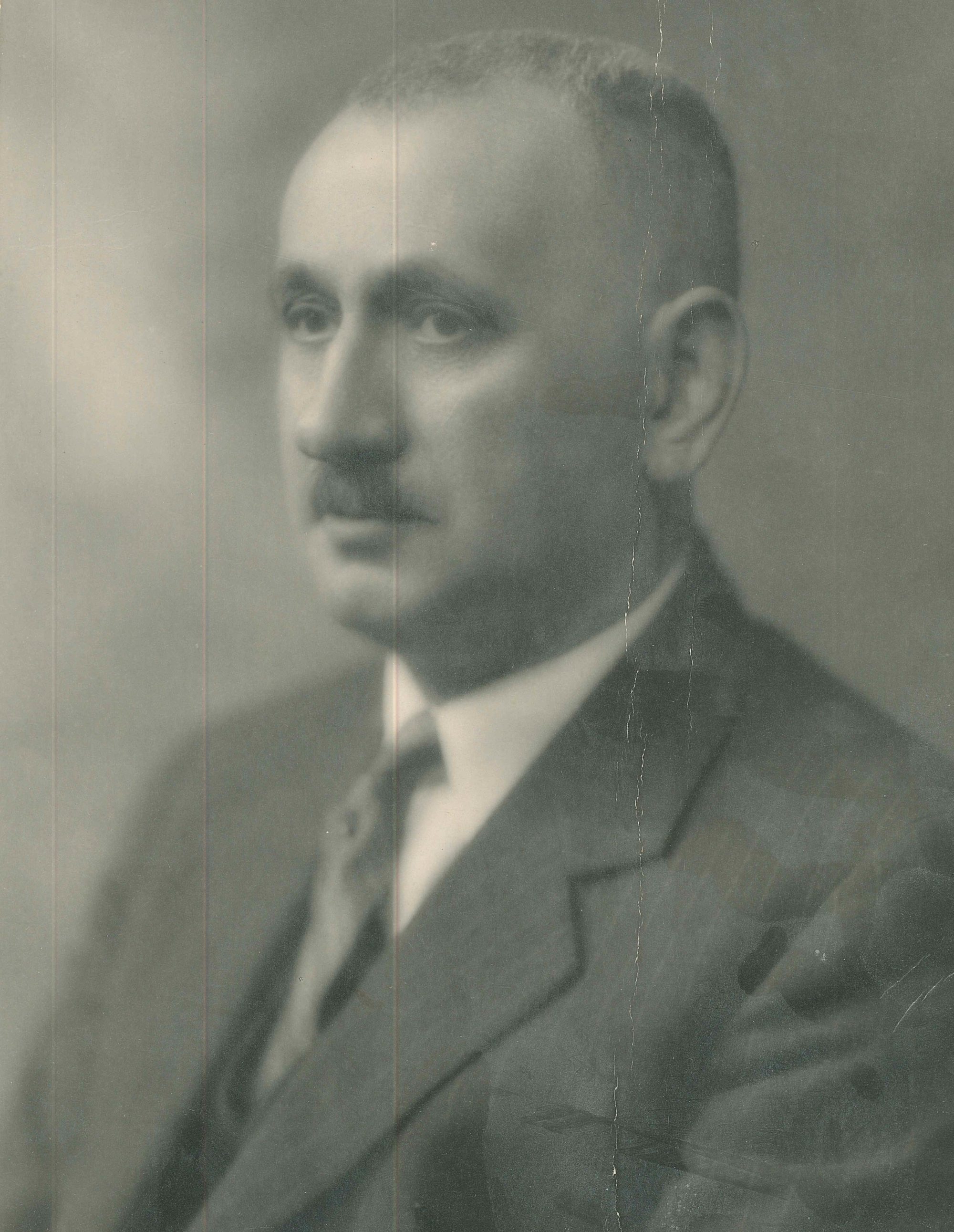Architects
Max Zev Blankstein
Born: –Died:
- Max Blankstein
Education/accreditation: Unknown school, Odessa, Russian Empire
Biography
Max Zev Blankstein was born in 1876 in Odessa, Russia. He was the son of Mayer “Zisy” Kritchmar and Vichna “Vera” Dorfman. Max also had several sisters: Devorka, Fanny, Laika, and Baska. His father was a bricklayer, stonemason, and building contractor. Max came of age during a dangerous time for Jewish people in the Russian empire, facing violence from pogroms, beginning in 1881. Russian law also discriminated against its Jewish citizens, who were disproportionately conscripted for military service while being excluded from educational institutions. To avoid military service, Mayer bought papers from a “macher” (paper seller) sometime in the 1860s, changing the family name to Blankstein and their nationality to Austrian. Max’s education likely came from an apprenticeship under his father, which is more probable given the barriers to work and education faced by Russian Jews at the time. He married his wife, Esther (Goldin) Blankstein, the daughter of a family of prominent building contractors, on May 6, 1902.
In 1904 war erupted between the Russian and Japanese empires in Russia’s far east territories. Wishing to avoid military service, Max emigrated to Canada. His brothers-in-law, Gershen H. E. Goldin, also sought to avoid conscription, and rendezvoused with Max in Winnipeg after traveling separately. Max took the Hamburg-America line, traveling on the SS Assyria before arriving in Halifax on June 14th, 1904. The ship’s manifest listed Max as an Austrian national, originating from Odessa, and employed as a tailor. His Hebrew given name was used (Mordche Blankstein), while his date of birth was estimated at 1874. Traveling alone, Max was listed as “ledig”, or single. Establishing an architectural practice in Winnipeg took some time, so Max took a job as a labourer with the Canadian Pacific Railway and send for his family. Esther arrived later with their children, Isaac Wolfe and Vera “Verna”, as well as Esther’s younger sister, Laika “Lena” Goldin and their mother, Furma (Zeabin) Goldin. They reached Quebec City July 28, 1905, traveling from Liverpool on the SS Canada. Esther died on July 2, 1906 at age 25. Max would marry her sister, Laika, in 1907. That same year, his father and his sisters, Baska and Fanny, as well as some of their family, immigrated to Winnipeg by means of ship and rail passage paid for by Max.
Max established an architectural practice in Winnipeg at a time of growth, particularly within the city’s Jewish community. The closeness of this community gave Max privileged access to a regular clientele. It’s no wonder that his buildings are densely located within the area known as New Jerusalem, which sat in Ward 5 north of the Canadian Pacific line, south of Flora Avenue, and west of Main Street. The area was home to the majority of Winnipeg’s Jewish people living in the North End.
Max also established close ties with up and coming members of the business community. As a product of these relationships, his works adorn the streets of Winnipeg’s important business, commercial, and industrial districts, including Main Street, Selkirk Avenue, and Jarvis Avenue. These connections proved to be even more valuable than credentials, as Max’s first registered project came in 1907, roughly three years before he was accredited to practice architecture in Manitoba. He established his closest ties with the housing and apartment magnates Rueben Cohen and Abraham Cohen, as well as Jacob “Jake” Miles (later partnered with Nathan Rothstein) of Allied Amusement/Allied Theatres, one of the city’s leading theatre developers. Sometimes, business came from inside the family, as was the case with the Winnipeg Cold Storage Company Ltd. building at 422 Jarvis Avenue. The company was partially owned by Meyer Chechik, husband of Max’s sister, Baska. It was on these names that Max Blankstein staked his career, designing the buildings that launched a Blankstein design-dynasty.
Max Blankstein had five more children with Laika: Cecil, Eva, Evelyn, Fred (Ingy) and Morley. Evelyn, became an architect in 1935, first working with her brother, Cecil, then Hobbs Glass. Evelyn was also amongst the first female architects to practice in Manitoba. Wolfe worked as a general contractor with Ladco. Morley also graduated from architecture, founding the notable Winnipeg firm Blankstein Coop Gillmor Hanna. Perhaps the most notable of Max’s children to become an architect was Cecil, who helped to found the firm Green Blankstein Russell (GBR), which, amongst other projects, designed Winnipeg City Hall, Polo Park Shopping Centre, and Shaarey Zedek Synagogue. Younger generations of Blanksteins continue to practice architecture and design.
Max Blankstein was on the cutting edge of architecture in Winnipeg, exploring the Edwardian, arts and crafts, and art deco styles. The imagination and ornateness of his designs testify to Winnipeg’s willingness to take risks, something that fuelled rapid growth in Blankstein’s era. During the course of his twenty-five year practice in Canada, he designed at least two-hundred buildings. This figure is likely higher, as it is possible that Max was not listed as the architect on some projects in order to work around official procedures. He was a member of the Royal Architectural Institute of Canada, and is said to be the first registered Jewish architect in western Canada. He passed away from an appendix attack on December 31, 1931, seven days after the opening of his last project, the Uptown Theatre.
Projects
Hebrew Association Hall, 239 Selkirk Avenue, 1909
Winnipeg Cold Storage, 422 Jarvis Avenue, 1909
McMartin Residence, 283 Kingsway, 1912
Palace Theatre, 501 Selkirk Avenue, 1912
Talmud Torah, 121 Charles Street, 1913
Wadena Hotel, 89 1st Street NE, Wadena, Saskatchewan, 1913
Zimmerman Block, 669 Main Street, 1913
Alenko Block, 376 Selkirk Avenue, 1914
European Block, 588 Manitoba Avenue, 1914
Jessie Block, 626 Jessie Avenue, 1914
North Panama Block, 229 Machray Avenue, 1914
Steiman Block/Merchant’s Hotel, 541 Selkirk Avenue, 1914
Rubin Block, 270 Morley Avenue, 1915
167 Logan Avenue, 1916
Globe Bedding Company Warehouse, 274 Jarvis Avenue, 1918
Slobinsky Bros. & Sons warehouse, 24 Derby Street, 1918
Max Blankstein Home, 131 Machray Avenue, 1922
New Hargrave Building/Film Exchange Building, 361 Hargrave Street, 1922
Talmud Torah, 220 Andrews Street, 1923
Parkview Theatre, 1823 Portage Avenue, 1924
Mindell Block, 607 Main Street, 1925
Plaza Theatre, 104 Marion Street, 1926
Rose Theatre, 801 Sargent Avenue, 1926
Dolgin Residence, 82 Smithfield Avenue, 1927
Tivoli Theatre, 115 Maryland Street, 1927
General Motors Trucks, 155 Fort Street, 1928
Kim Residence, 256 Garfield Street, 1928
Roxy Theatre, 11 Broadway Street East, Yorkton, Saskatchewan, 1928
Broadway Theatre, 1773 Broad Street, Regina, Saskatchewan, 1929
Lido Theatre, 220 Andrews Avenue (The Pas), 1929
Roxy Theatre, 320 20th Street West, Saskatoon, Saskatchewan, 1929
Roxy Theatre, 385 Henderson Highway, 1929
Chesed Shel Emes Chapel, 1023 Main Street, 1930
Smith Home, 133 Machray Avenue, 1931
Uptown Theatre, 394 Academy Road, 1931
Significant Dates
- 1904 –
arrives in Winnipeg
- 1910 –
becomes a registered architect in Manitoba
- 1929 –
becomes a registered member of the Saskatchewan Association of Architects



